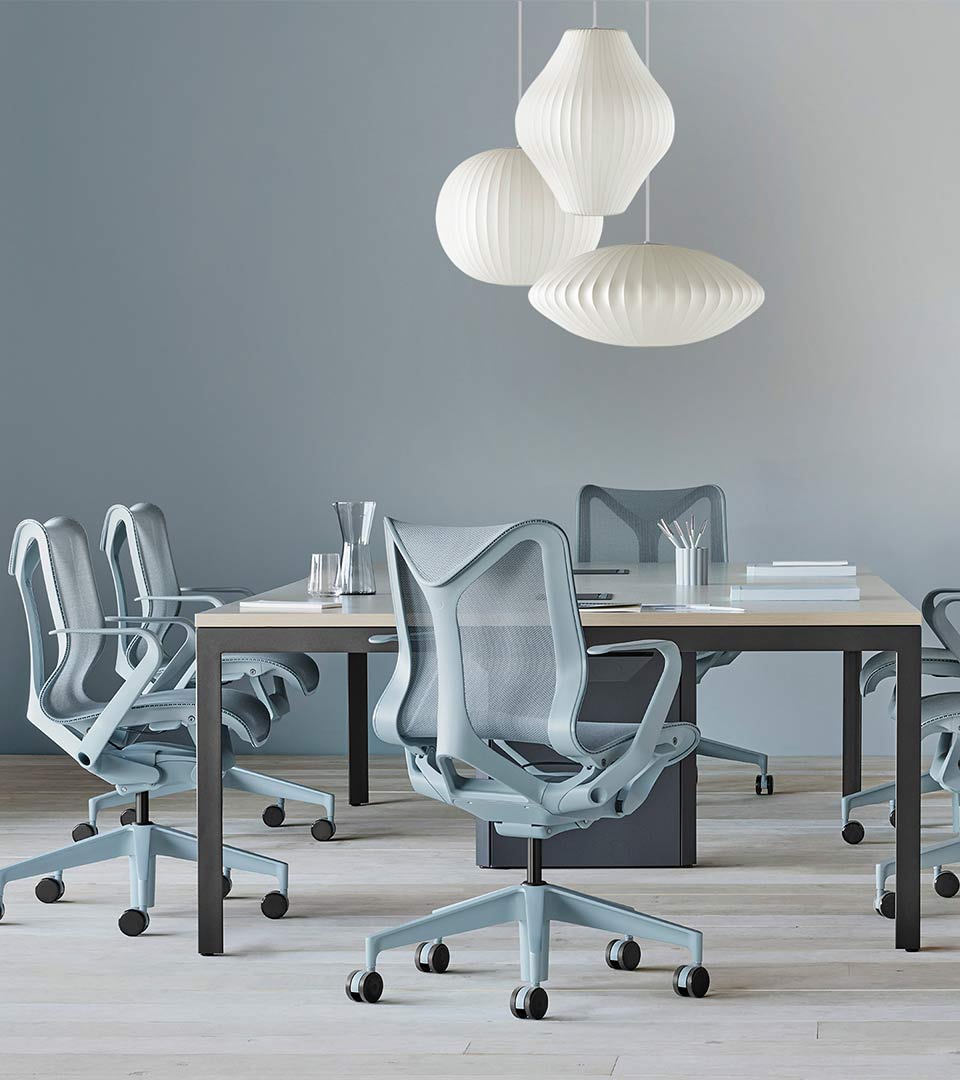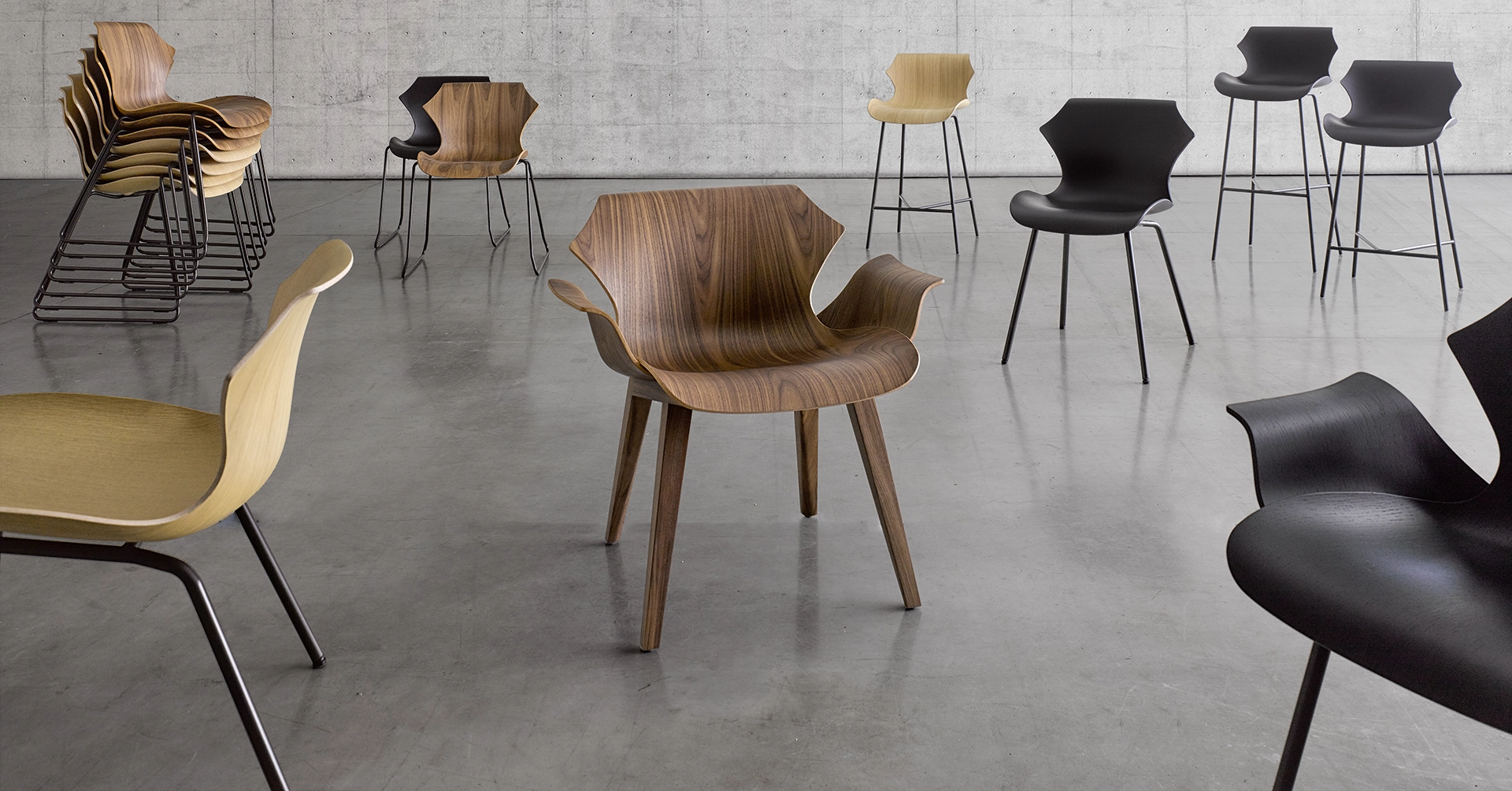Technology can curb ambition. A designer’s intentions are often compromised by practical limitations as much as financial ones. While the 20th century saw spectacular shapes fashioned out of fiberglass and plastics, creating radical lines from timber was a challenge.
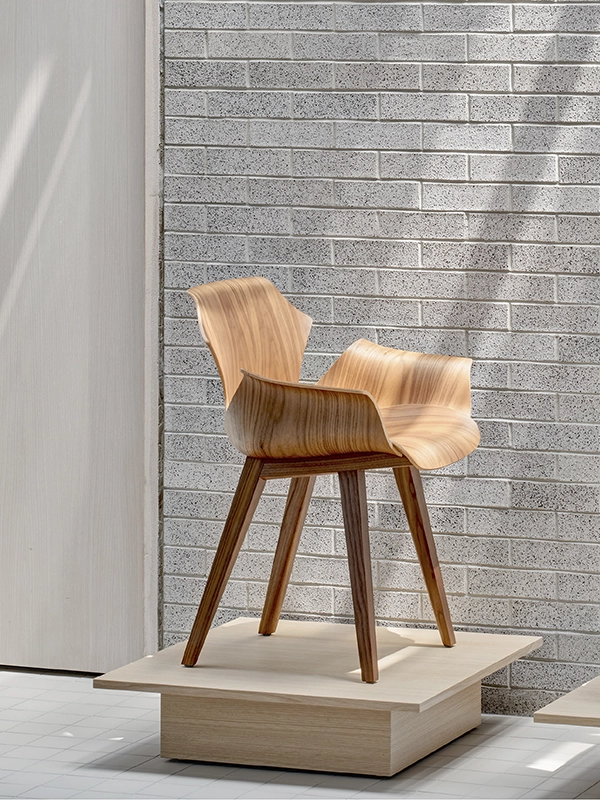
One of the most significant innovations of the last 100 years in wood came in the early 1940s from the studio of Charles Eames, who was working as a set painter at MGM Studios and experimenting with moulding plywood as a personal side project. His subsequent work for the military – creating leg splints with compound curves to follow the shape of a limb –served as R&D for the now iconic Eames LCW. Wooden furniture had never looked so radical or modern.
The BassamFellows Petal Chair is the most advanced 3D moulded wood veneer chair ever put into commercial production. It takes some of its inspiration from Saarinen’s Tulip chair, and offers a dialogue with the history of the Eames experiments. “We want to make the best for the most for the least,” Charles Eames said, and along with how liberating the technology of 3D wood veneer is, the financial realities of it are also a considerable factor. The Petal chair is state of the art and environmentally friendly, but the industrial nature of the process behind it, and its economic use of materials, makes for a democratic price point.
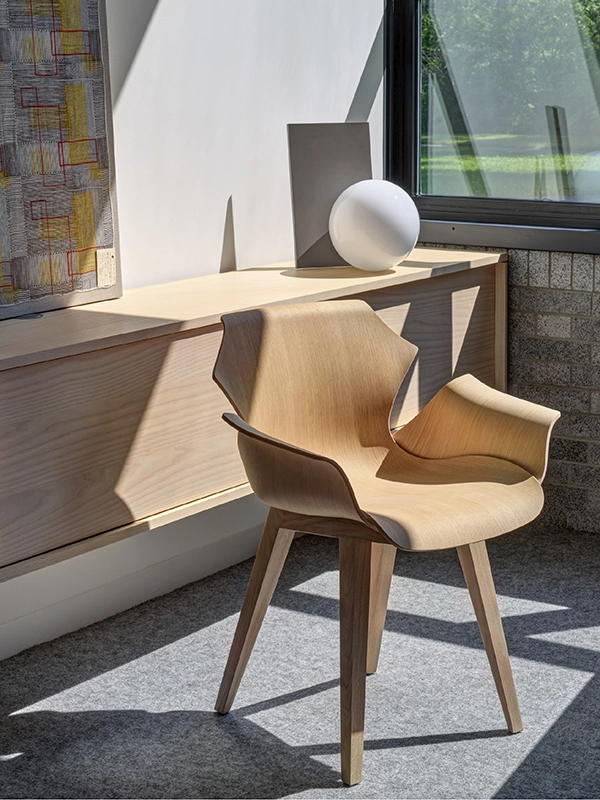
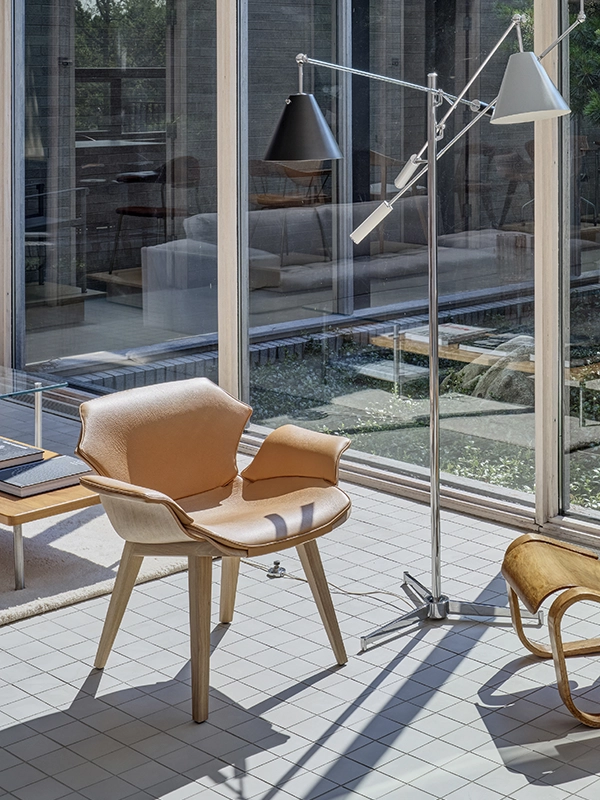
Nature frequently offers the perfect mood board for comfort in design – Saarinen’s Tulip offers a visual play on the flower of the same name, while the soft, smooth splaying of its fiberglass form creates something extremely satisfying to sit in. What can a chair offer, if not the physical pleasure of using it? Petal’s appeal is accentuated by the visual grain of the wood, which resembles the fine detail on a flower – the lines emanating outwards in the direction of a bloom.
It’s fitting that the Petal shell was developed in Grand Rapids, MI, at the same company that has been pressing the Eames’ moulded plywood chairs for decades. It draws a line back to the 1940s, but also represents a significant development for 21st century design. 20 years ago, CNC carving was in its infancy. The ergonomic and organic BassamFellows Tractor stool – which debuted in 2001– was only made possible through use of that technology. Today, it is standard. The Petal is similarly ergonomic and organic-looking, but pushes the boundaries of what’s possible with moulding: despite advances in 3D tech, the curvature of the rump of the shell, the waterfall edges and the shape of the arms are all extraordinarily difficult to achieve. But as with Charles Eames’ experiments in the 1940s, technology exists to be developed more than it does to curb ambition. It is constantly being shaped.

